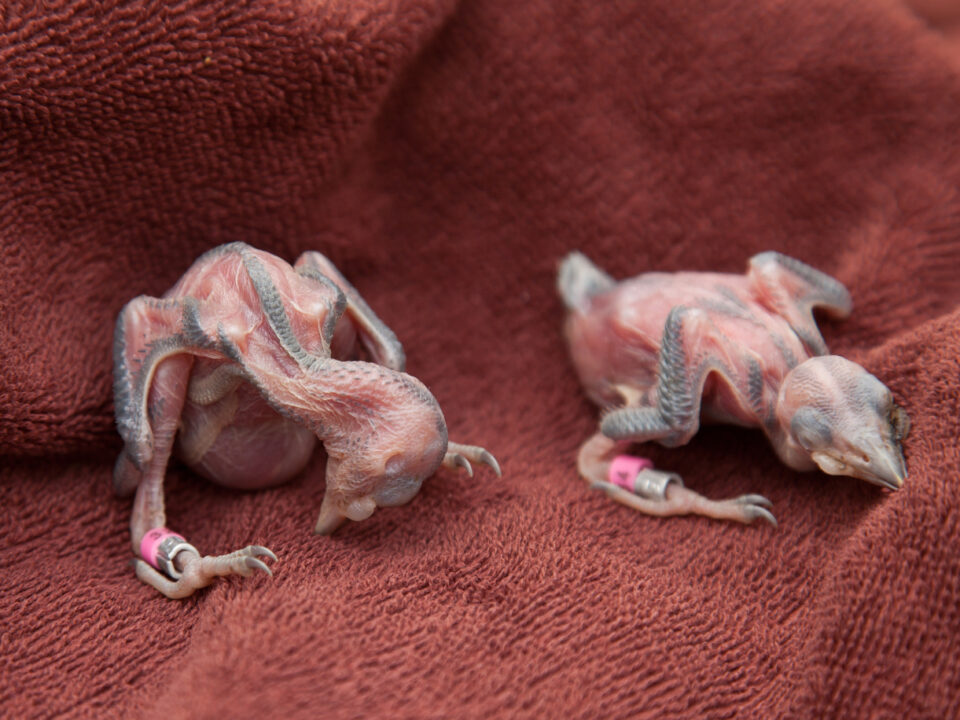Blood work
Black-bellied plovers complete annual cycle
July 7, 2016
Grace Spends the Week at TRS July 9, 2016
July 11, 2016
Blood is a universal diagnostic tissue used to monitor a dizzying and expanding array of health indicators in humans. Blood is particularly attractive as an indicator tissue because it is relatively easy and non-invasive to collect and it contains a host of constituents that have been shown to reflect a wide range of health conditions such as organ function, disease exposure, nutritional status, and cancer activity. The ongoing increase in the number of health questions that may be addressed using only a blood sample is astounding.
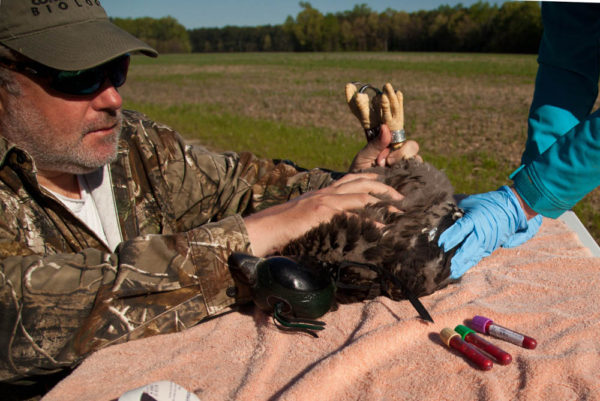
Bart Paxton holds a young eagle on an examining table near Jamestown Island after Marie Pitts collected blood samples. The bird is included in a National Park Service study to assess contaminant exposure in the Chesapeake Bay. Photo by Bryan Watts.
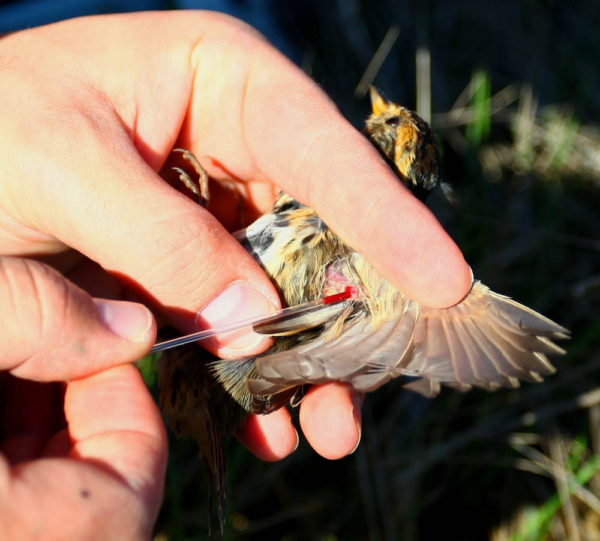
A capillary tube is used to collect a small blood sample from a saltmarsh sparrow. This sample was tested for mercury in Dan Cristol’s lab at the College of William and Mary. Photo by Bryan Watts.
Aside from the value of blood for veterinarian diagnostic purposes in pets and wildlife, bird blood has been used for decades to address a long list of ecological questions and to monitor environmental health. Over the years, CCB biologists have collected blood from a long list of species often in collaboration with partners to monitor contaminant exposure in species of conservation concern or to investigate ecological questions.
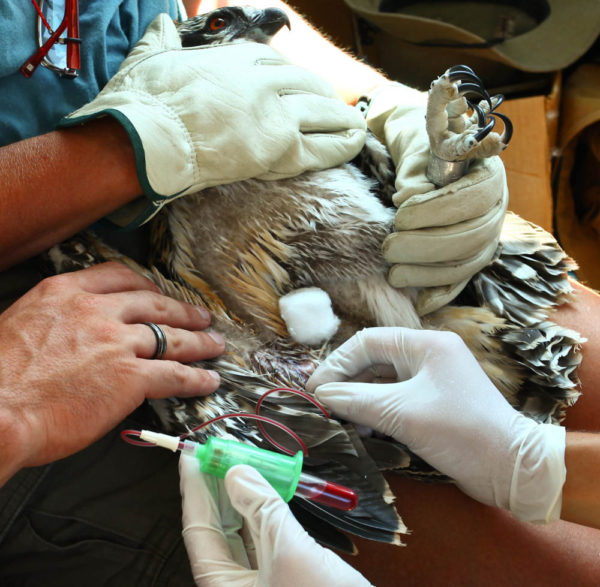
Libby Mojica draws a blood sample from an osprey on the James River as part of a stable isotope study to investigate diet. Photo by Bryan Watts.
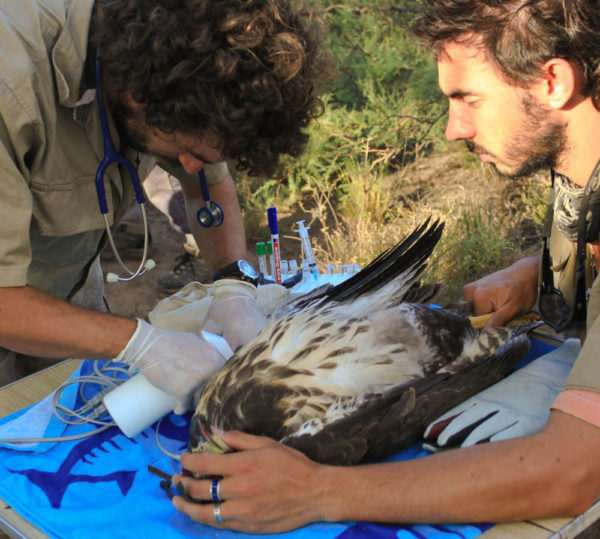
Preparing to collect a blood sample from a solitary crowned eagle in Argentina. The sample was used for a full workup to better characterize blood in this rare species. Photo by Bryan Watts.
During the spring of 2016, CCB, in collaboration with the National Park Service, began a two-year investigation of contaminant exposure in eagles breeding on park service lands within the Chesapeake Bay. Blood samples were collected from nestling eagles to investigate exposure to heavy metals and organic compounds. The study is a sister project with a similar investigation on park service lands in the Great Lakes. During their 100th anniversary year, the National Park Service continues to pursue an ethic of land stewardship that is a model for all.
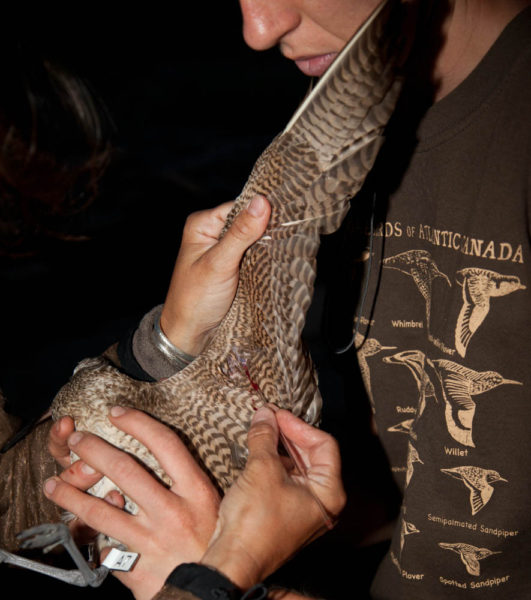
Julie Paquette uses a capillary tube to collect blood after a brachial puncture from a migratory whimbrel passing through New Brunswick, Canada. Photo by Bryan Watts.
Written by Bryan Watts | bdwatt@wm.edu | (757) 221-2247
July 7, 2016
Related posts
Adult female from Elkins Chimney territory. Both the female and male were lost from this site between 2024 and 2025 nesting seasons and were not replaced. This territory has been occupied since 1995. Five territories were vacated between 2024 and 2025 along the Delmarva Peninsula in VA. Photo by Bryan Watts

